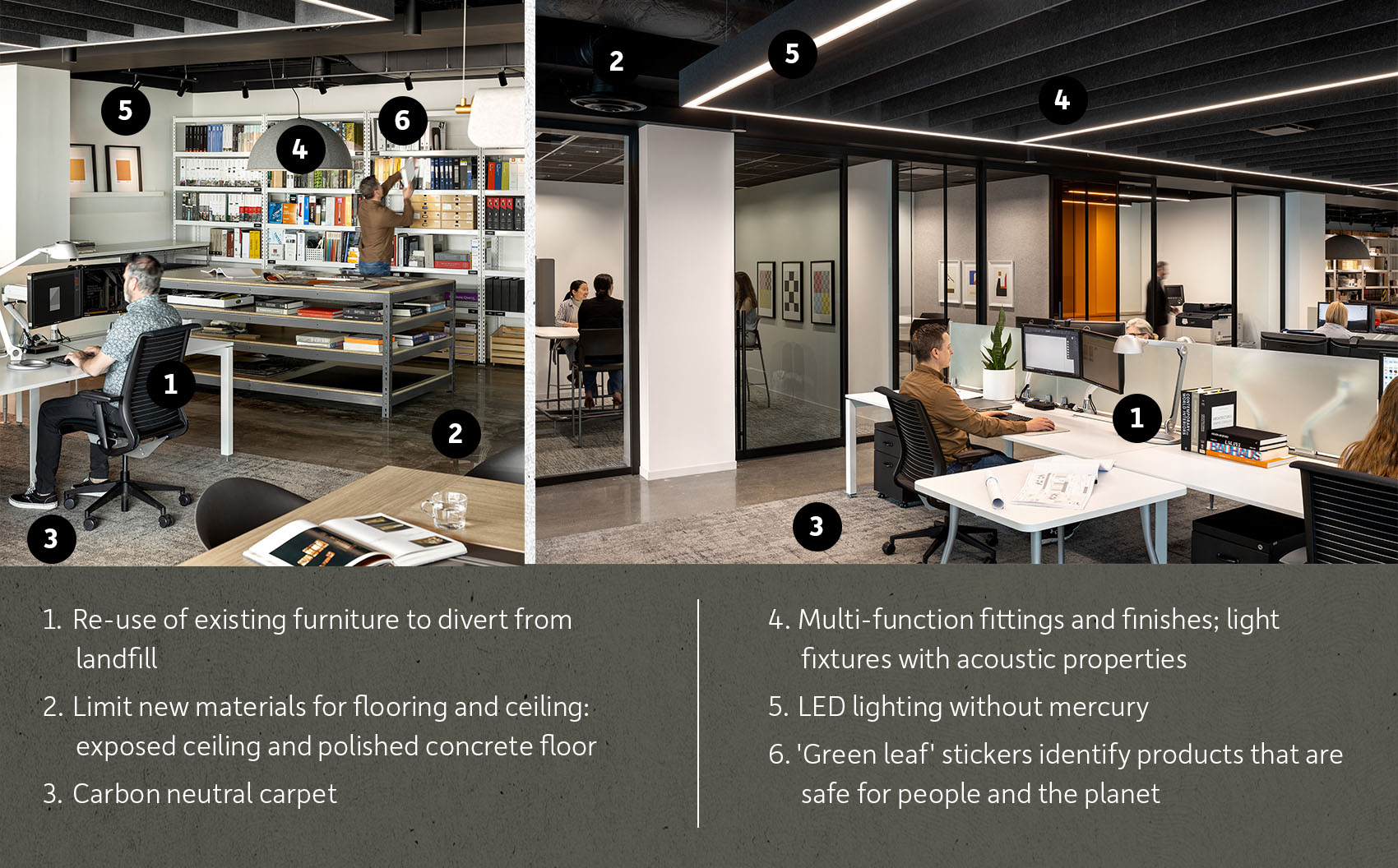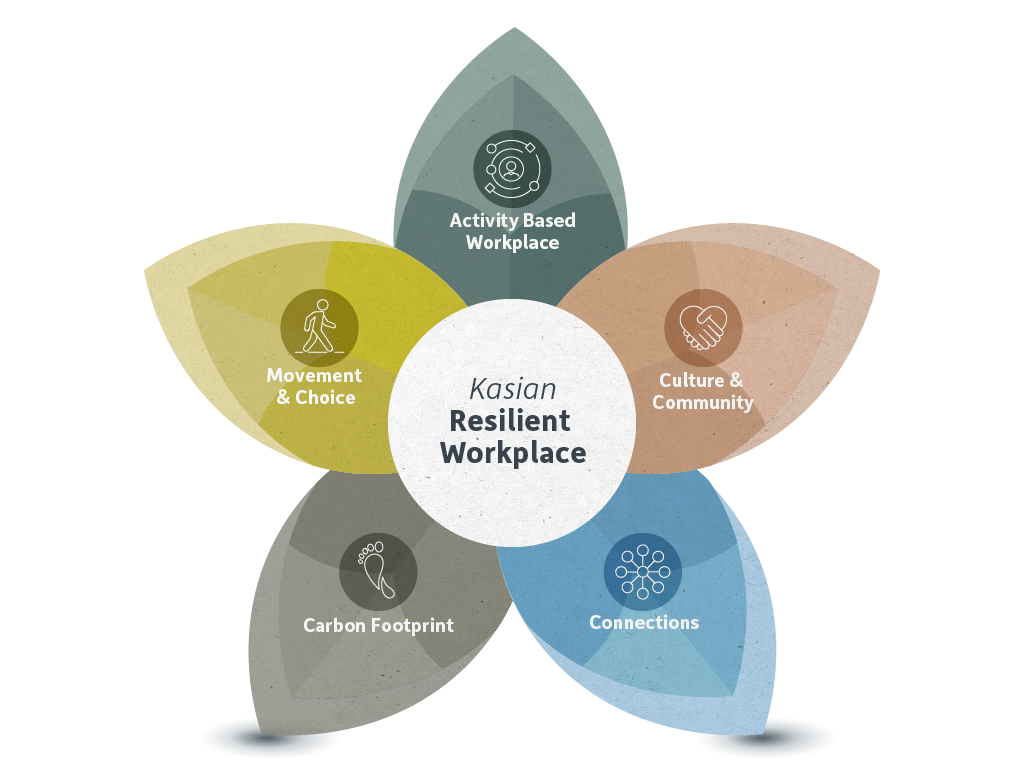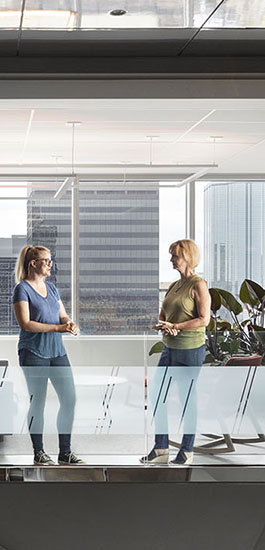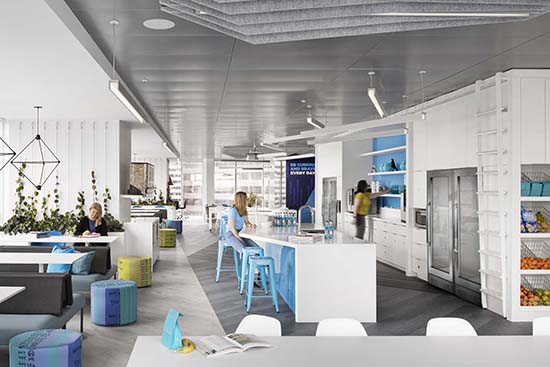Carbon Footprint
● With efficient planning, including spaces with dual functions and our new workstyle with desk sharing, the studio size has been reduced by 60% of the size of our previous space. This represents less space to build, furnish, heat, and operate.
● The design includes efficient lighting, appliances, and equipment; all contributing to the overall Operational Carbon reduction.
● Mindful material selection during the design phase helped to maximize the use of carbon-neutral finishes such as carpet or solid surfaces.
● We limited the amount of new material by refinishing existing concrete floors and strategically locating new acoustic ceilings only where required.
● The use of raw materials was limited by incorporating design solutions with more than one use such as acoustical lighting.
● With the reuse of existing furniture and an extensive donation program to staff and the community, excess furniture and office supplies were diverted from landfill.
● Staff and visitor transportation emissions are reduced by the transit-oriented studio location; more staff are now walking and cycling for their commute and to get to meetings.

Read Next
ARTICLE
Piloting a hybrid-office design
By: Kim Green , Lara Pisicoli , Suzanne Campbell
Portfolio
Explore our client list of workplace transformations
By: Sally Mills
We’d love to get to know you
Get in touch
"*" indicates required fields
Get in touch
Share







